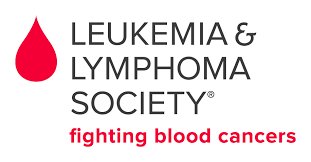Chronic lymphocytic leukemia (CLL) is a type of blood cancer that begins in the bone marrow and can progress either slowly or quickly depending on the form it takes. CLL is the most common type of leukemia in adults and can progress either slowly or rapidly, depending on the patient’s disease. There have been many new treatments approved for CLL, which has dramatically improved the prognosis for many patients.
If you have been diagnosed with CLL, it is important to be under the care of a hematologist-oncologist. This a doctor who specializes in the treatment of blood disorders (hematology) as well specializing in treating cancer (oncology). Speak to your hematologist-oncologist about all of your treatment options and what results you should expect from them. Your hematologist-oncologist can also answer many of your questions about the specifics of each treatment option. In some cases, clinical trials are the best option for treatment. You can speak with your doctor to see if there are any trials available for you.
CLL can be slow-growing and may not need immediate treatment, or it may grow at a faster rate, requiring treatment right away. The slower-growing form has an increased number of lymphocytes, but a normal or slightly below normal level of red cells, platelets and white cells in the blood and the disease can remain stable for years. When the CLL is more aggressive it leads to too many CLL cells in the marrow. This interferes with the production of normal blood cells, as the CLL cells are crowding out the healthy cells. As a result, the number of fully-functioning red cells and platelet levels then drop to lower-than-normal levels in the blood.
How CLL develops
Chronic lymphocytic leukemia develops when the DNA of a developing stem cell in the bone marrow is damaged.
Normal stem cells in the bone marrow form blood cells, which consist of white cells, red cells and platelets. With CLL, the damaged cell becomes a leukemic cell and multiplies into many CLL cells. The CLL cells grow and survive better than normal cells. CLL doesn’t usually completely interfere with the development of the mature red cells, white cells or platelets, therefore making CLL generally less severe than acute leukemia.
However, the number of healthy blood cells is usually lower than normal and this may result in:
- Anemia – a condition when there is a low number of red cells in the blood which can cause fatigue and shortness of breath.
- Neutropenia – a condition when there is a low number of white cells which causes the immune system to not be able to effectively guard against infection due to a lack of neutrophils (a type of white cell).
- Thrombocytopenia – a condition when there is a low number of platelets, which can cause bleeding and easy bruising with no apparent cause.
- Pancytopenia – a condition when there are low numbers of all three blood cell counts.
Signs and Symptoms
Chronic lymphocytic leukemia (CLL) symptoms usually develop over time. Early in the course of the disease, CLL often has little effect on a person’s well-being. Some people with CLL do not have any symptoms. The disease may be suspected because of abnormal results from blood tests that were ordered either as part of an annual physical or a medical examination for an unrelated condition. An unexplained elevated white blood cell (lymphocyte) count is the most common finding that leads a doctor to consider a CLL diagnosis.
People with CLL who do have symptoms may:
- Tire more easily, and/or feel short of breath during day-to-day physical activities
- Lose weight because of decreased appetite and/or increased use of energy
- Have lymph nodes and a spleen that may become enlarged as a result of an accumulation of CLL cells (leukemic lymphocytes)
- Have infections of the skin, lungs, kidneys or other sites that may occur as result of low immunoglobulin levels and decreased neutrophil counts.
To learn more, visit The Leukemia and Lymphoma Society.
 Content provided by:
Content provided by: